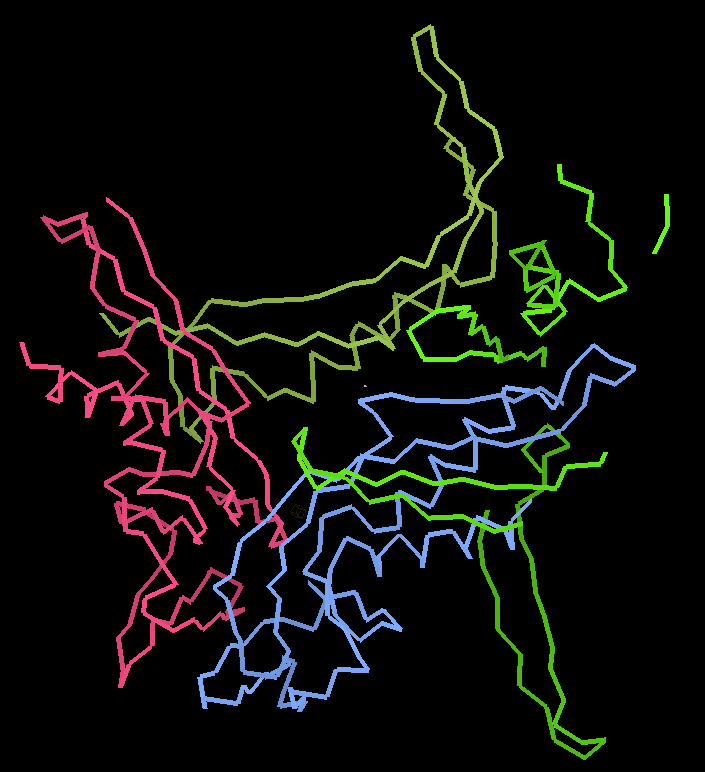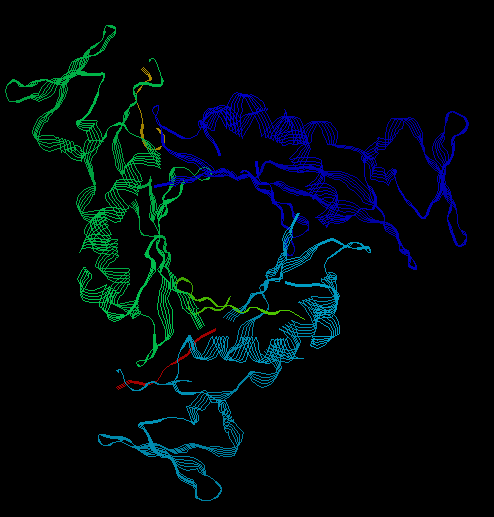Content:
Introduction
See also the PDB summary.
From a very simple autoPROC run of this Se-MET crystal, we have data for 2 wavelengths (infl and hrem). We also have the sequence (181 residues, 4 Met - 3 of which are N-terminal around a His-tag):
MAHHHHHHMMKEETLNSDNSSAEVSVESPSFSFNCAHFIAYNGFRETLHGHNYNVSLKVRGYVRDDGYVIDFSILKEKVK KVCNKLDHHFILPIYSDVLKFENVKNNIKIICEDNSEYSFPERDCIKLPIKHSSTEEIGQYILNQLIEEMDVSLLKSRHI HYIEISVSESPTQKAIVHKYI
Initial autoSHARP run
We start autoSHARP through the default (httpd-based) interface and define the following for a 2-wavelength MAD experiment:
- the sequence
- explicitely setting spacegroup to P41212 (since this seems the most likely spacegroup - see autoPROC tutorial)
- searching for 2 Se sites (seems a good compromise given the N-terminal Met residues in the sequence)
- infl data:
- wavelength 0.9794 A
- f' and f'' values (guessed): -6 and +4
- reflection file 1y13-ALS_01_scala_0.979400.sca
- hrem data:
- wavelength 0.9184 A
- reflection file 1y13-ALS_01_scala_0.918400.sca
After 2 1/4 hours we have
10 chains with 439 residues : 5 docked in sequence (333 residues) [R/Rfree=0.2218/0.298]

Files:
- 0_eden.mtz.gz
- 0_hatom.pdb.gz
- 0_eden_flat_55.5pc.mtz.gz
- 0_eden_flat_51.5pc_warpNtrace.mtz.gz
- 0_eden_flat_51.5pc_warpNtrace.pdb.gz
Can we do better?
We could also try a new tool we're developing (combining density modification using PARROT and model building using BUCCANEER, both programs by K. Cowtan):
% ljs -mtz eden_flat_55.5pc.mtz -fast -seq ../../datafiles/1Y13.pir
which after 10 minutes gives us 492 residues with 479 docked into the sequence (we expect 543 residues, the PDB entry contains 498 residues):

Files: